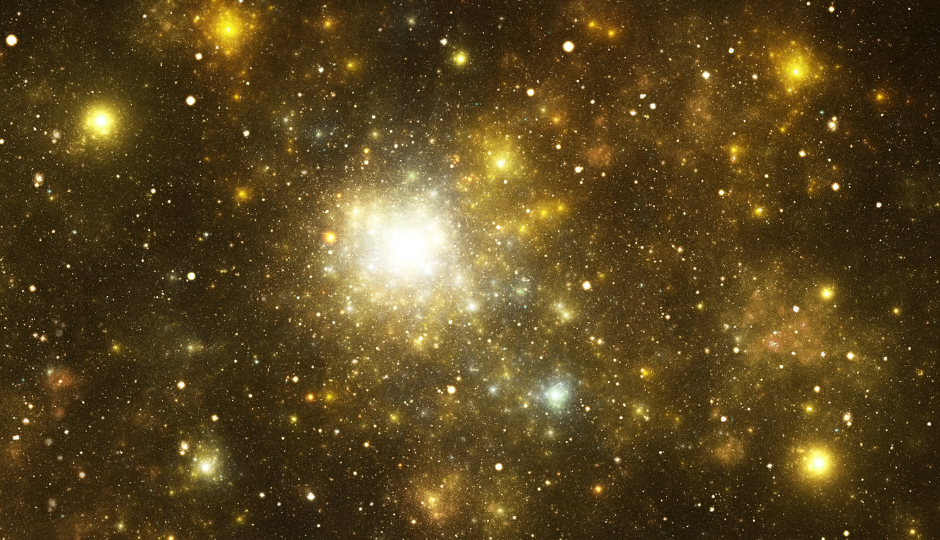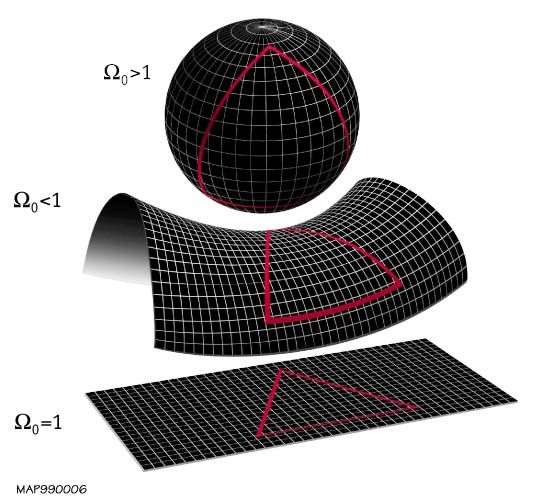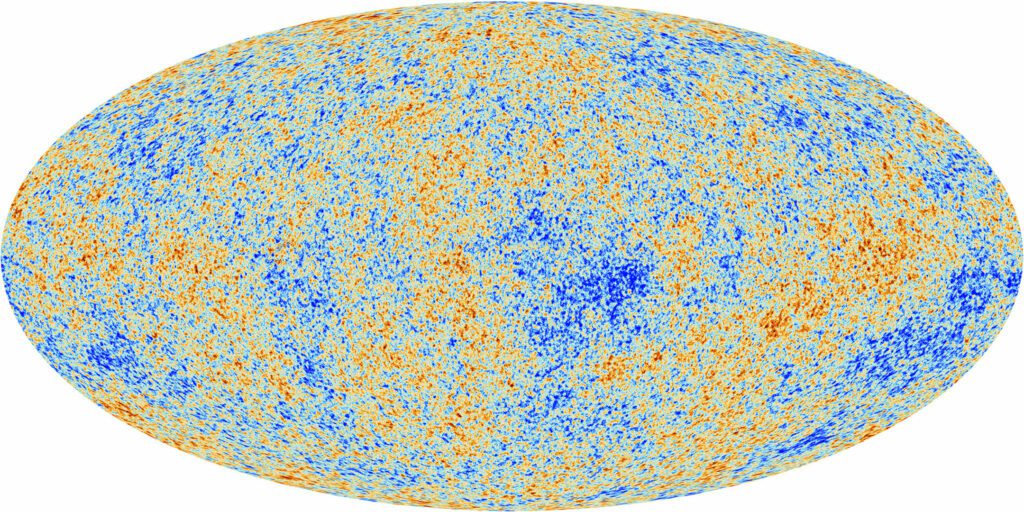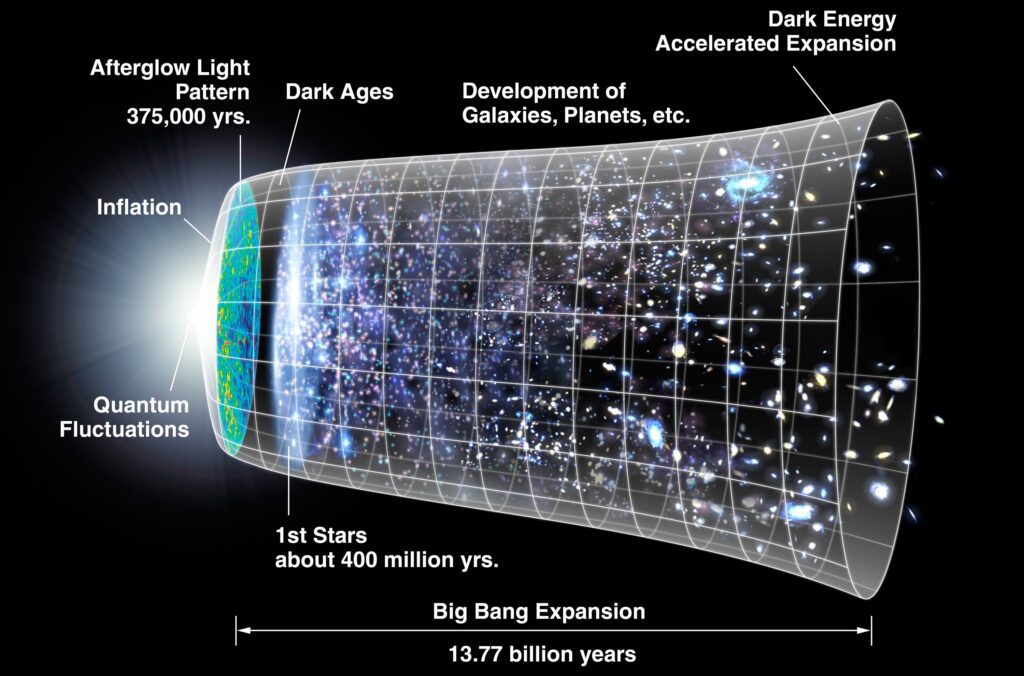
But it is important we keep asking, and searching because the journey to the answer is as important as the answer itself. In science, observation is key to confirming truth. This adds a level of complexity in answering the question ‘is the universe infinite?’
The shape of the Universe adds further complication, so to tackle the big question we first need to understand why the shape of the universe matters, and the difference between the observable and unobservable universe. So strap in and let’s get started!
The Shape Of The Universe And Why It Matters

There are a few theories as to what shape the universe is. Depending on the shape, the universe can either be infinite or finite. We know that the universe around us, that being the part we can directly observe, is flat. If the entire universe is flat, then it could possibly be infinite.
What Do We Mean By A Flat Universe?
To understand this we have to get to terms with what scientists mean by flat. As Prof. Joseph Silk – Head of Astrophysics at the University of Oxford – put it in an interview with the ESA, “What we mean is that the Universe is ‘Euclidean’, meaning that parallel lines always run parallel, and that the angles of a triangle add up to 180°.” As ‘flat’ is a two dimensional term it is easy to envision this as a plane, say a piece of paper. If you were to draw parallel lines on a flat surface like this, they will never meet. A universe shaped like this could be infinite.
However, take that flat piece of paper and curve it round to create a cylinder, then join the ends making the shape of a torus and that infinite universe becomes finite. Whereas if you were to draw the same lines on a sphere they would at some point meet because of the curvature.
In other potential curved models, say on a sphere, if you were to draw a triangle, the curvature would warp the angles to add up to more than 180°. If the universe is curved like a sphere, rather than flat, then it is likely finite. It will expand but then eventually contract and end.
Why Is Flat The Favorite Theory?
Inflation theory, and observational evidence offer backing to the idea that our region of the universe is flat. While locally, space can curve around dense gravitational mass, like planets, stars and black holes, on the larger scale it is ultimately flat. However, in 2019 observations from the Planck Observatory suggest that, according to the cosmic background radiation, the universe may well be spherical. This was disproven in 2020 by the Atacama Cosmology Telescope as a statistical fluctuation, but shows just how lively and active the debate is.

Another big part in determining if the universe is flat or curved, comes down to identifying its density. The two important numbers here are the critical density and the actual density. Scientists have measured the critical density and depending on whether the actual density is smaller, greater or equal to critical density, will determine whether the universe is curved (closed), flat or saddle (open) shaped. A closed universe would be finite, an open one would be infinite and a flat one could be either but would likely be infinite.
The Observable Universe
As the name suggests, the observable universe the part of the universe that we can prove exists. It is the distance in space and time that we are able to measure and observe. It also includes everything we can hear or touch too, observing through any of our senses or telescopes and instrumentation.

We can say with a great degree of confidence that, according to the big bang theory the ‘observable universe’ is indeed finite. We can measure it’s size. speed and acceleration, as well as determine that it had a beginning. Also, we can measure roughly when this beginning occurred.
The Unobservable Universe
The unobservable universe is everything that exists in our universe outside of the observable area. It is what lies beyond what we can see and measure. The unobservable universe is moving at such a speed and at such a distance that it is unlikely we will ever be able to observe it. As we can’t see it, and can’t measure it, there is very little we actually know about it.
So Is The Universe Infinite?
All we can really say for certain at the moment, is that the universe is bigger than we are able to observe. That we can only see a part of it, and this is really important. If all we can observe is a piece of the pie then our science is working with incomplete data. All we can say is the Universe ‘may’ be infinite, but for now we can not say for sure. We know that it is not infinitely old and can trace its origins back to the big bang. But beyond this, we still have a lot to figure out.
We can never fully understand the nature of the Universe, not yet at least. There are still too many variables that we don’t fully understand. Dark matter and dark energy at the top of that list. but that doesn’t stop us from trying. Over the course of human history, scientists, philosophers and theologians have come up with countless theories about the nature of the universe. Some of these theories are better than others. But much like our physical evolution, our theories evolve over time.
When hit with a crossroads, such as answering is the Universe infinite or not, there are fans of either path. Science will dictate the answer, eventually after enough rocks have been turned and avenues explored. For the big questions like this to have an answer, there are usually many, many smaller questions that require one first.